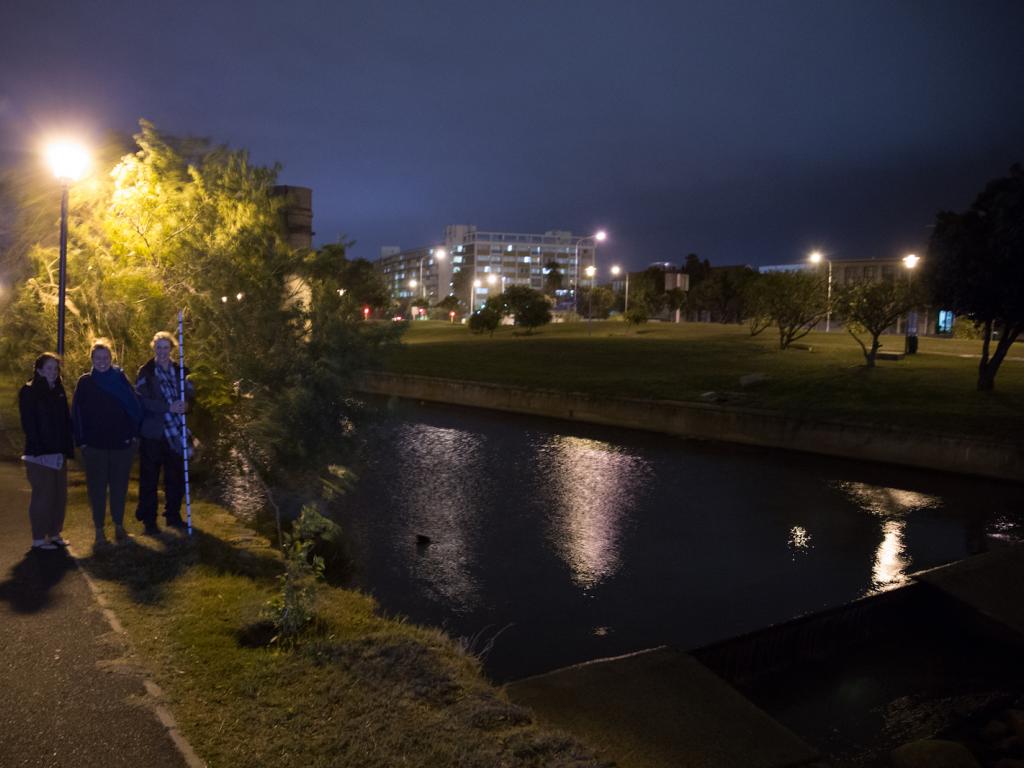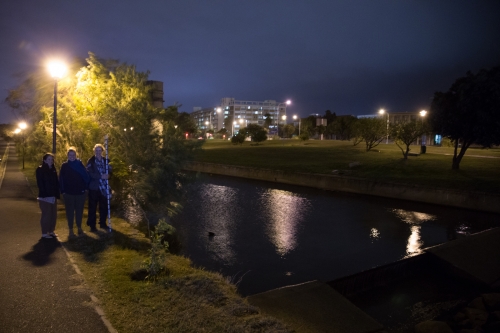Tracing stormwater in the Liesbeeck River - students passion drives scientific discovery


Before and after pictures of the Liesbeeck River
Three students from the Department of Biological Sciences, Ruan van Mazijk, Lucy Smyth and Eleanor Weideman, together with their supervisor Associate Professor Adam West, recently had a paper published in WaterSA. This paper looked at the source of water in the Liesbeeck River following a storm.
The paper “Isotopic tracing of stormwater in the urban Liesbeek River” is the product of an Honours module run in 2017 (the ‘Day Zero’ year) that looked at the source of water in the Liesbeeck River following a storm. Using Stable Isotopes, the team showed that almost all of the water in the river following a storm in a drought year, was recent rainfall, and not displaced groundwater, as had been shown in a previous study of a natural catchment in Jonkershoek in the Western Cape.

Lucy, Eleanor and Ruan on a late night shift measuring water flow
This finding indicates that this rainwater, falling on a hardened urban environment and then subsequently running through a highly canalized urban river into the sea, is effectively lost from the terrestrial system, without recharging groundwater. This suggest that utilizing this water in a storm capture project for aquifer recharge, or urban use, could benefit a water-stressed city without negatively compromising groundwater resources.
This research and outcome was notably remarkable for a one-week long Honour’s module. Ruan, Lucy and Eleanor’s engagement and dedication so impressed Associate Professor West that he suggested they write this up for publication after the module, under his guidance. The committed team of three duly did this and thereby gained their first exposure to the process of scientific publication and now have their first publication.
Associate Professor Adam West comments, “I think this is a remarkable lesson in what is achievable in science, given a relevant question and the passion to see it through. The knowledge frontier is often closer than we think
